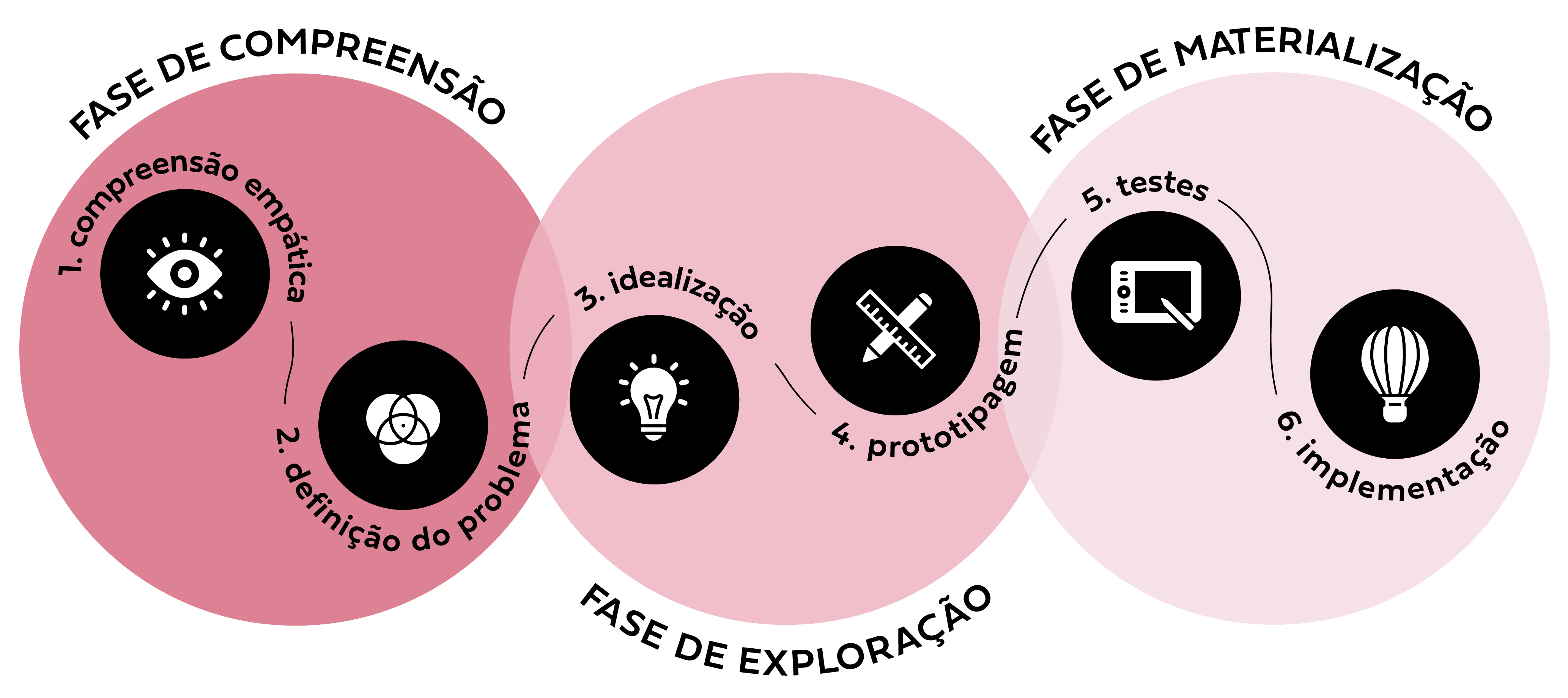How does Design Thinking works in a project
In this article we will explain what Design Thinking is, what the stages of one of the best known models are and the importance of thinking outside the box when developing your website and corporate image.
What it is?
Design Thinking is a design methodology that approaches the solution of complex problems from a user-centred perspective.
The Hasso Plattner Institute of Design at Stanford, the leading university in the teaching of design thinking, has proposed a model that includes five stages: understanding human needs; reframing the problem; brainstorming to generate multiple ideas; creating prototypes; and testing. But what does each of these stages actually consist of?

Empathy
It is the empathic understanding of the problem presented. This requires exploring the area of interest though observation, engagement and empathy with people to understand their experiences and motivations.
It also requires immersion in the physical environment for a more personal and deeper understanding. This step allows design thinkers not to be guided by their own assumptions, but rather by the insights provided.
Problem definition
Consists of using the information provided in the previous step, analysing and synthesising the observations and creating a humanised definition of the key problems identified.
In this way, promising ideas are gathered, focusing on the organisation of resources and other competences to solve the problems effectively. The evolution to the next stage begins, with questions that make it possible to generate ideas for possible solutions..
Idealization
If empathy allows us to get to know our customers and problem definition enables us to synthesise information in a human-centred way, idealisation consists in generating ideas.
It is the prior knowledge that will allow us to think outside the conventional and, consequently, identify new solutions. Resources such as brainstorming and brainwriting may be used..
Prototype
In order to investigate the solutions generated previously, the design team will be responsible for developing prototypes which may be disseminated and tested within the team itself, in other departments of the company or even in a group of people outside the organisation.
This experimental phase aims to identify the best possible solution for each of the questions raised, encouraging research, improvement and examination of the proposals.
In the end, the implemented solutions will be accepted or rejected, enabling a clearer and more objective view of the users' thoughts, attitudes and behaviour when interacting with the final product.
Testing
In this final phase, the entire product is tested according to the best solutions identified.
As it is an interactive process, the results obtained are often used to redefine one or more problems, which includes a new vision of the product and the customers..
Design thinking and 4por4
In this final phase, the entire product is tested according to the best solutions identified.
As it is an interactive process, the results obtained are often used to redefine one or more problems, which includes a new vision of the product and the customers..
For 4por4, better than achieving is to surprise and exceed. Let's walk together?